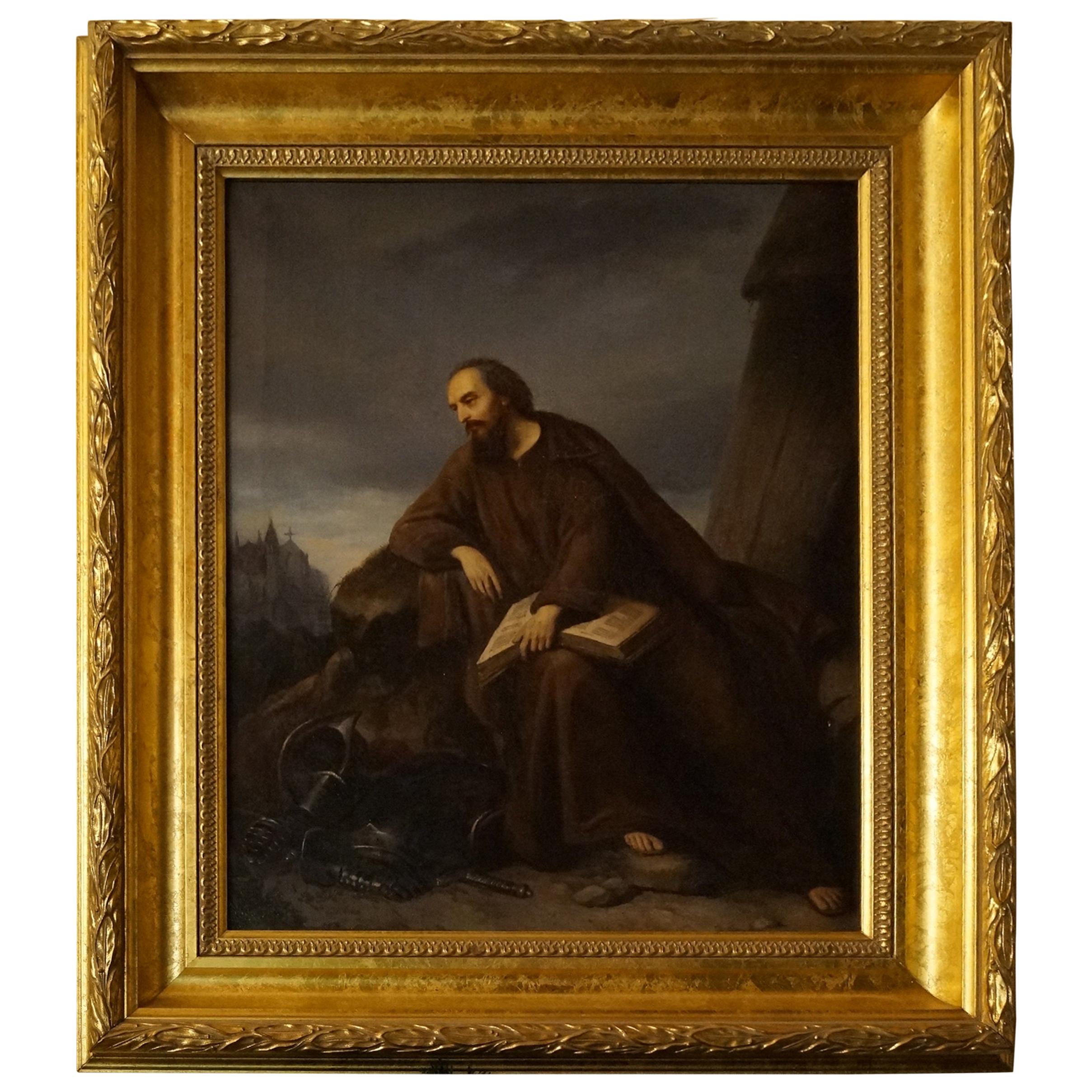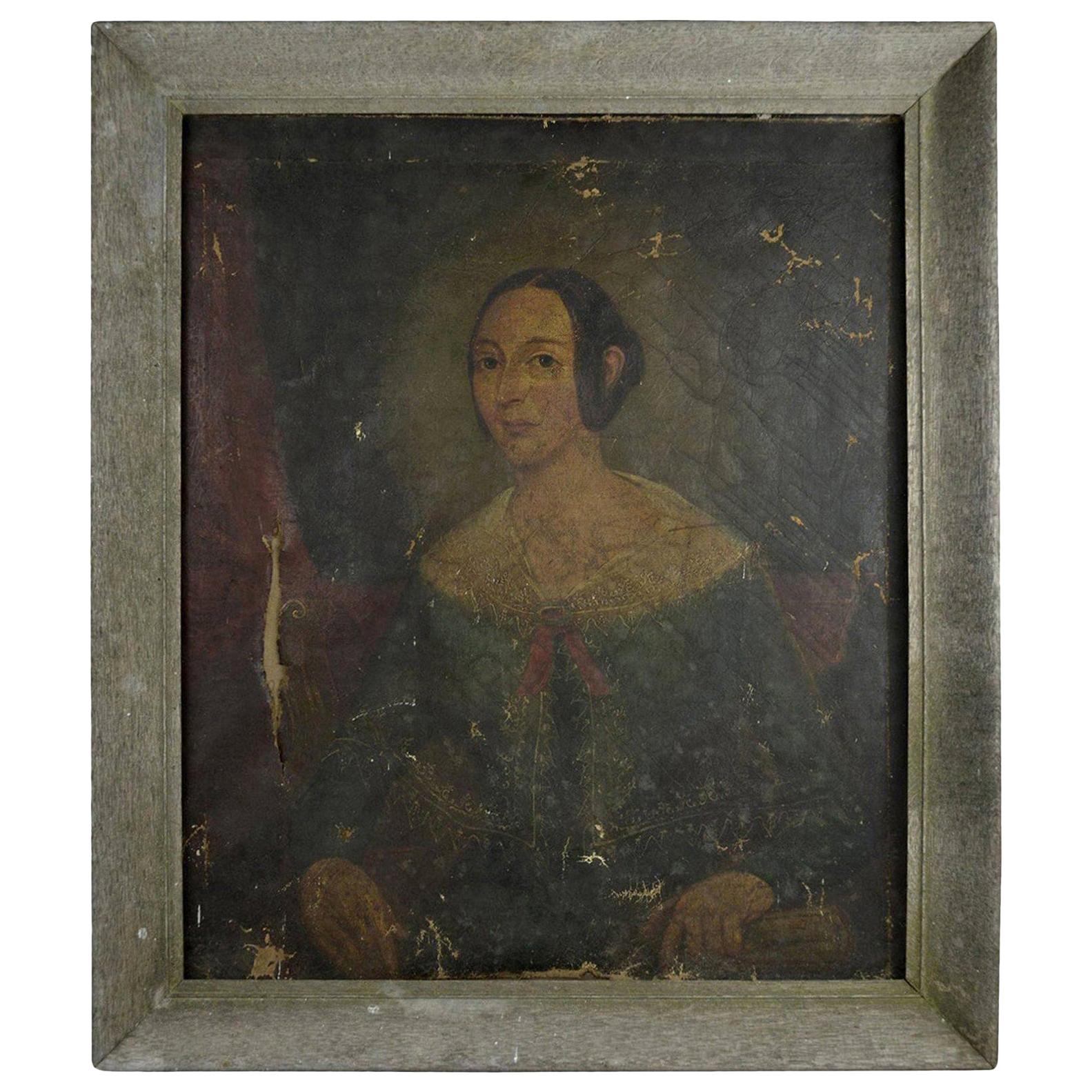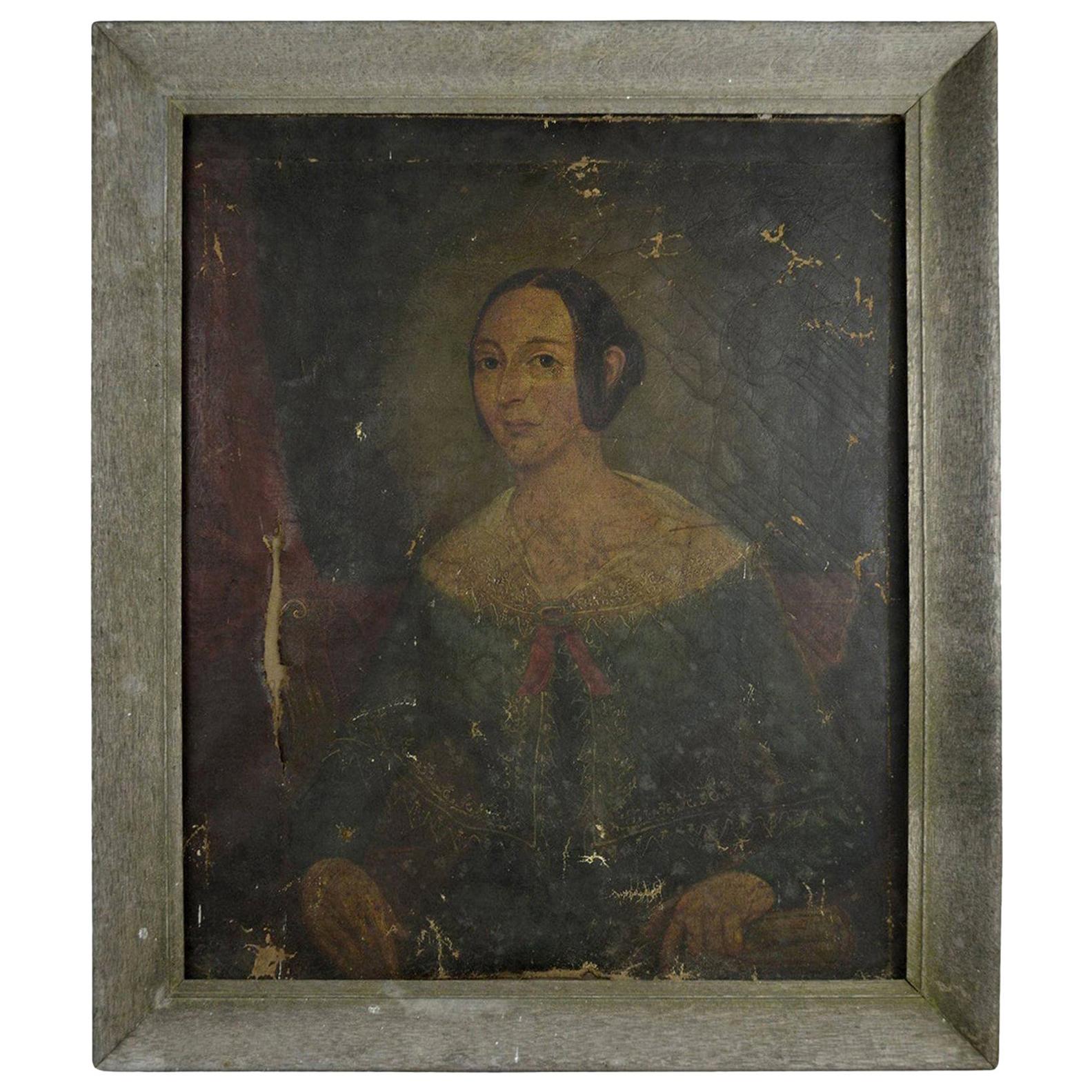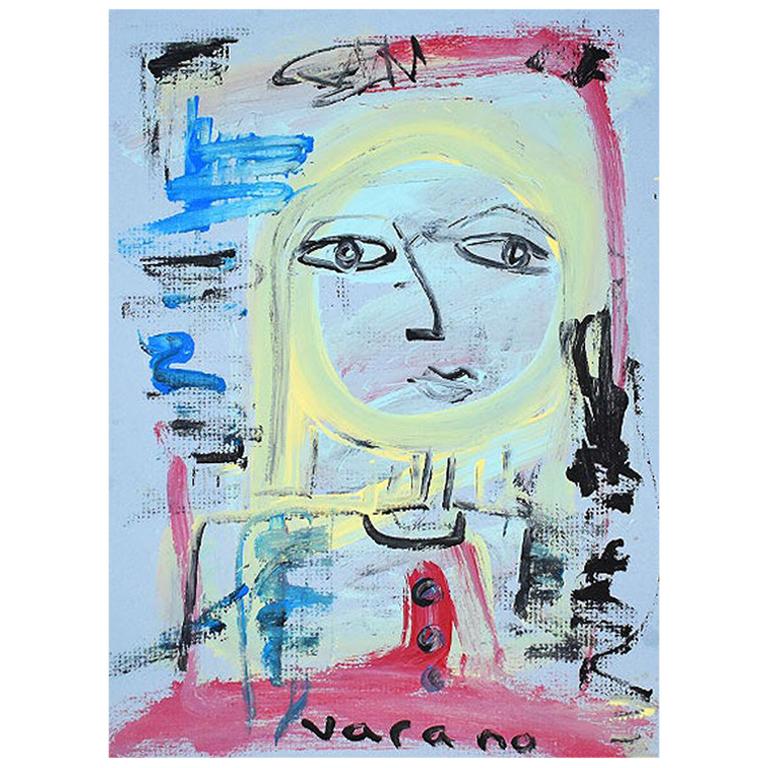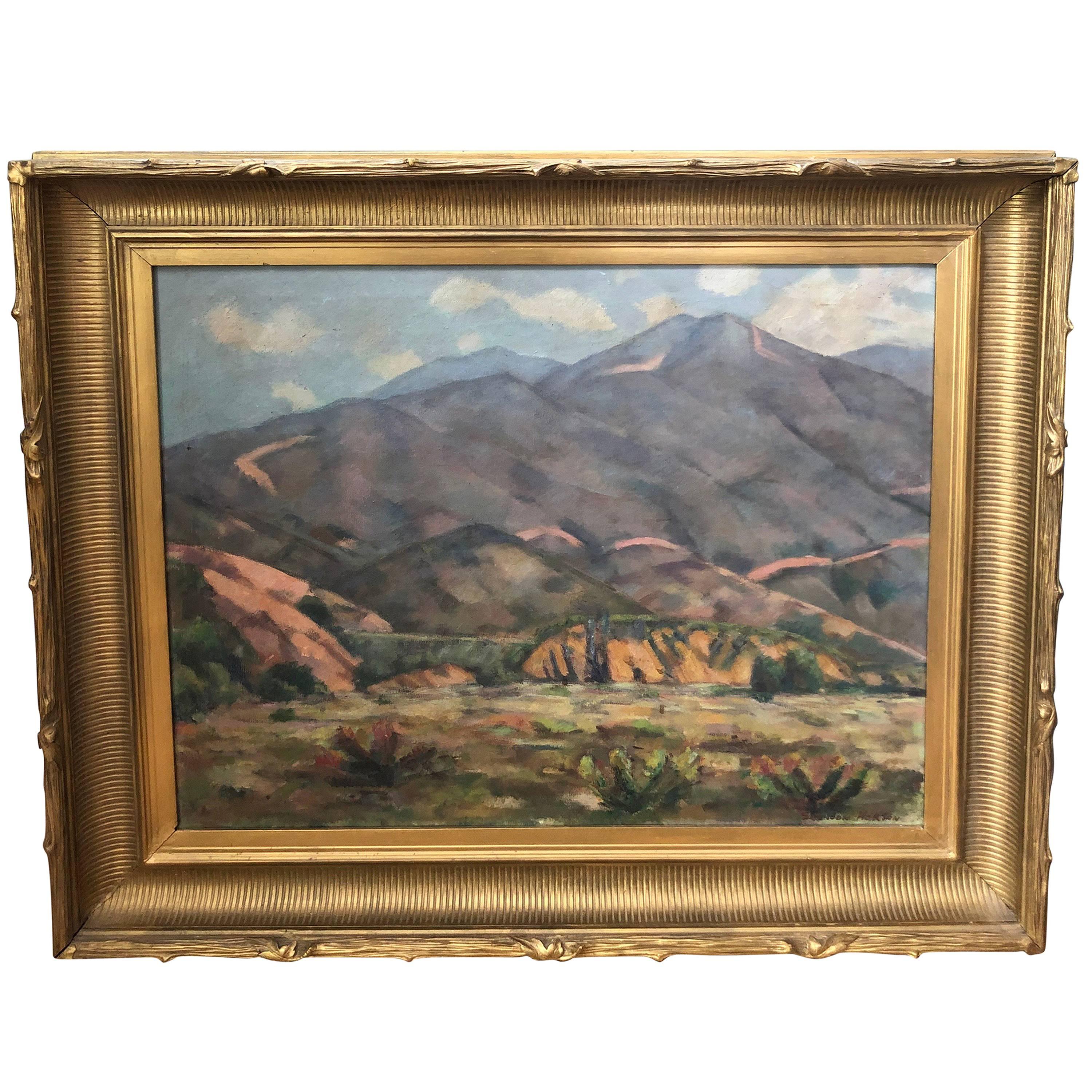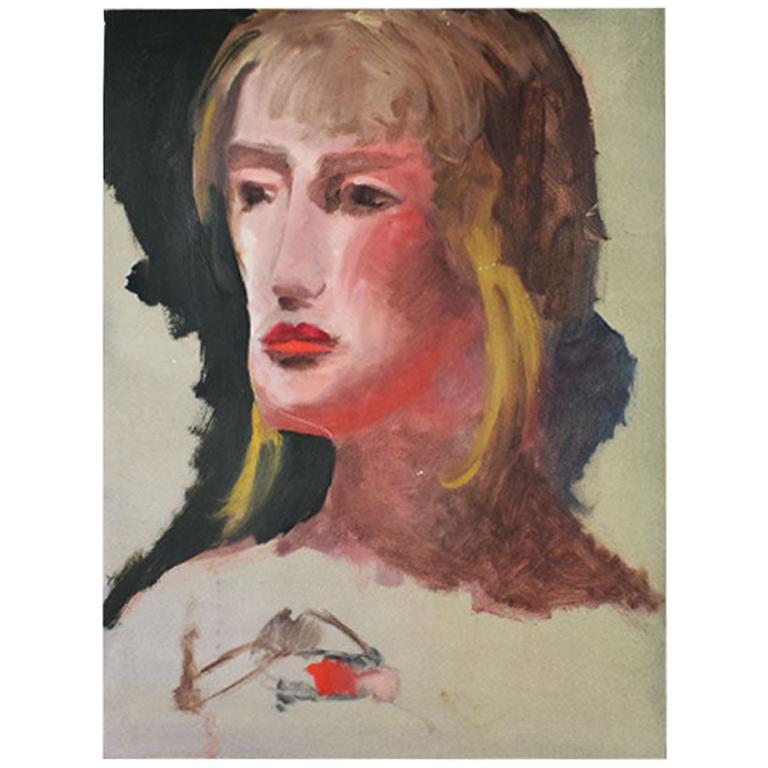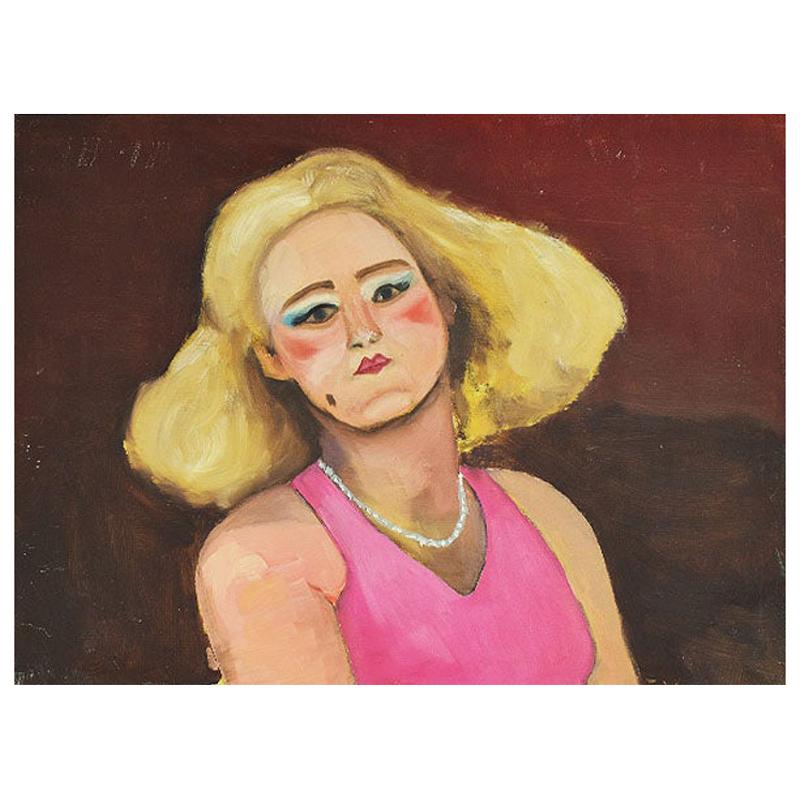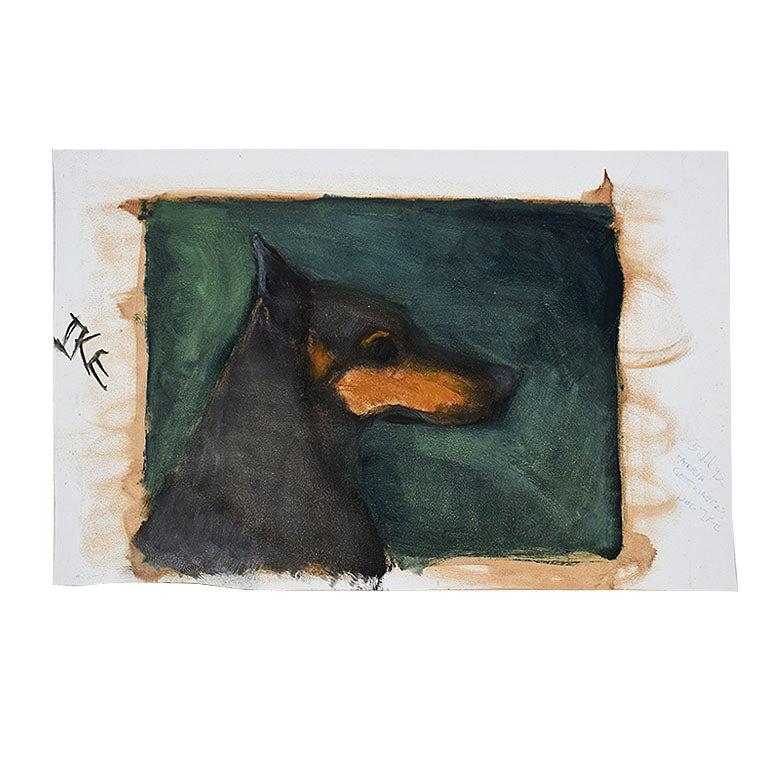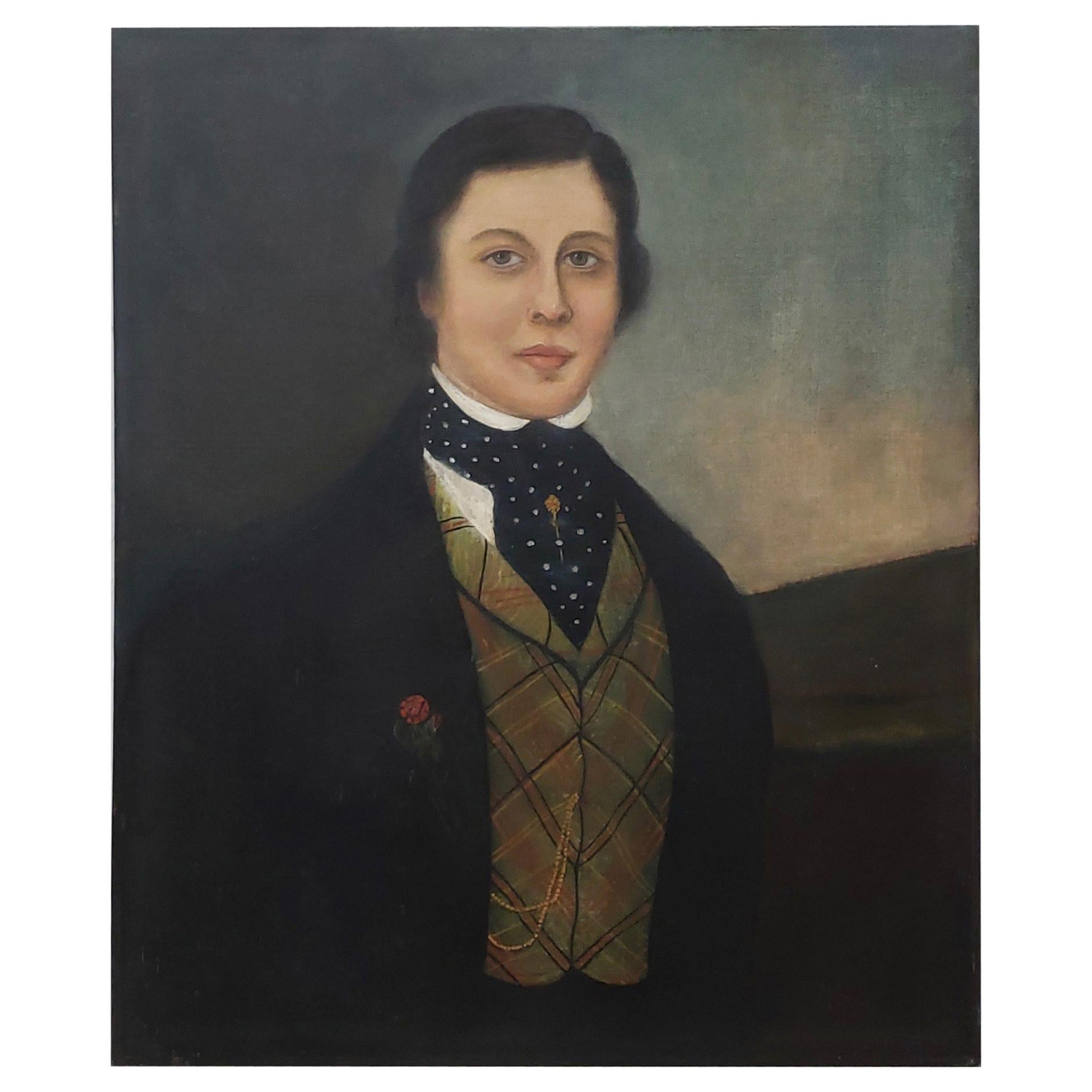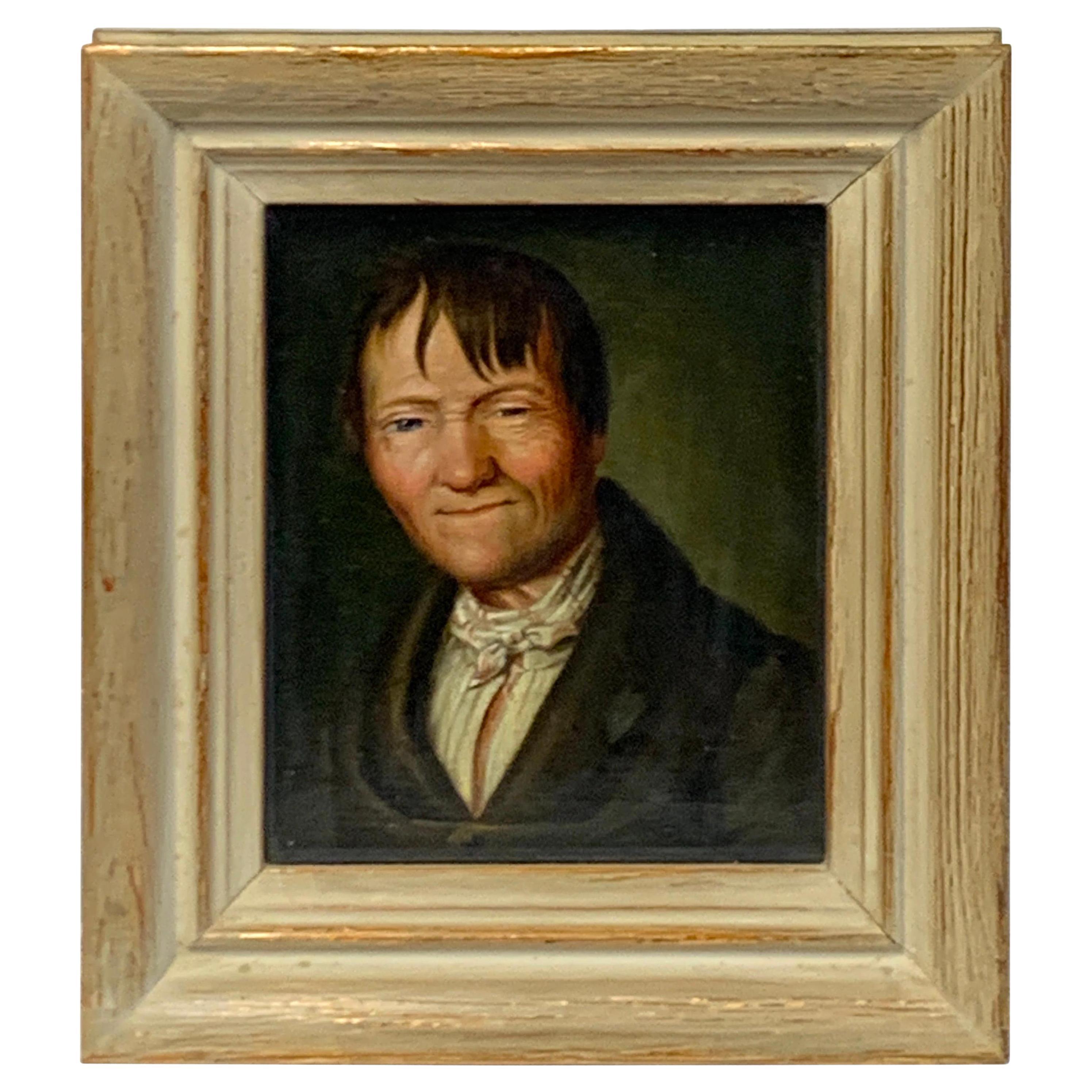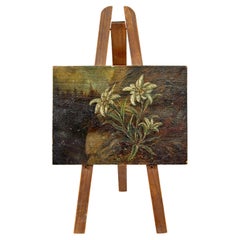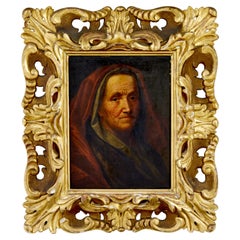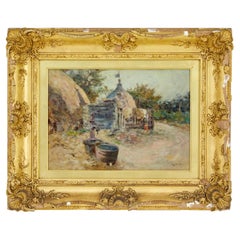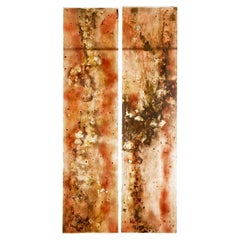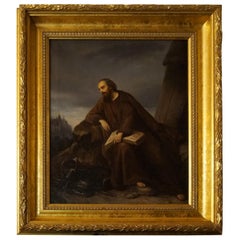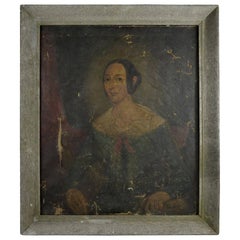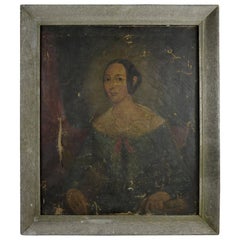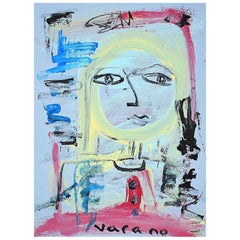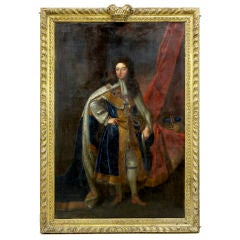
PORTRAIT OF WILLIAM III STUDIO OF SIR GODFREY KNELLER
View Similar Items
Want more images or videos?
Request additional images or videos from the seller
1 of 8
PORTRAIT OF WILLIAM III STUDIO OF SIR GODFREY KNELLER
$49,500List Price
About the Item
(The Hague, 14th November 1650- 8th March 1702 Kensington Palace, London)
Studio of Sir Godfrey Kneller
(Lübeck, Germany 1646?- 1723 London)
Oil on canvas, c. 1690, in a fine original carved frame with gadrooned mouldings,
surmounted by a coronet
Height 8ft 3” (within frame )
Width 6ft (within frame)
The Royal Collection houses an autograph version of this portrait, commissioned by
William III from Sir Godfrey Kneller, and a replica (formerly owned by the Earl of
Halifax) exists at Temple Newsam, Leeds. The King is shown in his Garter robes, a
year after his accession in the wake of the Glorious Revolution. The present
painting’s recent discovery in Ireland suggests the occasion of its commission, since
this was also the year that James II was decisively vanquished by his Protestant rival
at the Battle of the Boyne. The grand original frame that the portrait wears, with a
gadrooned moulding on its outer edge, is surmounted by a coronet, and it is quite
possible that this was a royal gift to a seigneurial supporter in that battle.
The history of the battle is well known, its outcome having momentous consequences
for the history of both Britain and Ireland. But William’s rashness at the Boyne could
well have ended in catastrophe for the Protestant forces. To begin with, prior to
engagement, he was wounded whilst reconnoitring the ground near Bridge of Slane:
‘A detachment of about 40 Irish cavalry then took station in a ploughed field across
the river from William’s picnic site where they remained, inactive, for about 30
minutes before returning and retiring. The purpose of this strange manœuvre, which
some took as an attempt to intimidate the king, was soon revealed. Two six-pounder
field guns had been smuggled down amongst the horsemen and positioned behind a
hedge bordering the field. They waited until William and his entourage had
remounted and were riding slowly back to the east. The initial shot killed two horses
and one man within 100 m of the king; the second ricocheted off the bank of the river,
lifted and grazed William’s right shoulder, tearing his coat, waistcoat and shirt and
abrading the skin on the shoulder-blade, drawing ‘near half a spoonful of blood’. A
third shot broke the butt of the Duke of Württenberg’s pistols in his saddle holster and
deprived his horse of its whiskers…’
In the fight at Oldbridge later the following day, whilst fording the Boyne about a
mile from Drogheda, William plunged forward but was forced to abandon his horse,
according to some sources because it became stuck in boggy ground on the enemy
John Childs, The Williamite Wars in Ireland, 1688-91, Hambledon Continuum, London, 2007, p. 212
side, according to others after it was shot from beneath him. (This second version
declares that Theobald Mulloy supplied him with another, for which act his family
became hereditary standard bearers to the King of England.) William followed this
with further recklessness:
‘William, after biting his nails over the fate of his beloved Dutch Guards [hammered
after their premature fording of the river earlier on] forfeited all control when he
charged into the mêlée at the head of the cavalry like Alexander the Great. He could
have been shot or hacked down by any common trooper and it was inappropriate
behaviour for a Stadholder of the United Provinces, King of England, leader of the
Grand Alliance and commander-in-chief of Ireland. In extremis, such personal valour
had its place but the situation at Oldbridge was in hand, though slower to develop
than William’s impatience might have wished. On the day before, however, his
performance both in front of the enemy and his own troops following the wound to
his shoulder had been vital in maintaining morale and cohesion…’2
As it turned, the combination of superior forces and superior tactics, along with better
luck, saw James II flee, first to Dublin, then to France, leaving his Catholic supporters
disgusted, and William triumphant.
After (?) Jan van Huchtenburg
Battle of the Boyne between James II and William III, 11 June 1690
Oil on canvas 110 × 169 cm (43.31 × 66.54 in)
Rijksmuseum, Amsterdam
If the present portrait was commissioned, as seems possible, in the wake of this
victory, who might have received it? William’s forces were extremely various: the
infantry consisted of three Huguenot regiments led by La Melonière, Du Cambon, and
Ibid., p. 224.
La Caillemotte (killed in battle), along with the Duke of Württemberg’s Danish
Brigade, Solme’s Dutch Blues, two English battalions in Dutch service, and the
following others: Beaumont’s, Wharton’s 12th, Ferdinando Hastings’ 13th, Meath’s
18th Royal Irish, Hamilton’s 20th, the Duke of Norfolk’s 22nd, Herbert’s 23rd Royal
Welsh Fusiliers, Deering’s 24th, a Brandenburg and a Finland Regiment. The horse
consisted of the Life Guards, the Blues, Sir J. Lanier’s, Villiers’ 2nd Dragoon Guards,
John Coy’s 5th Dragoon Guards, Viscount Hewitt’s 6th Dragoon Guards, Lord
Cavendish’s 7th Dragoon Guards, Delamere’s and Langston’s, Hayford’s First Royals,
Conyngham’s Enniskillen Dragoons, Leveson’s 3rd Hussars, Portland’s Dutch Horse,
Ginkell’s Dutch Horse, and Schomberg’s French Horse (also Huguenots). The senior
commanders included Prince George of Denmark, the husband of Princess Anne; the
Duke of Württemberg (from Germany); the Prince of Hesse-Darmstadt, the Duke of
Schomberg and his son Count Meinhard Schomberg; the Count of Nassau, Baron
Ginkel, Count Solms, Major General Overkirk, Major General Scravenmoer and the
Earl of Portland (these, from the United Provinces); Lieutenant General James
Douglas from Scotland, the Duke of Ormonde (Ireland); and from England, Percy
Kirke, the Earl of Scarborough, the Earl of Manchester, Lord Sydney and the Earl of
Oxford.3 The majority of these figures can be discounted as possible recipients, either
because their futures lay in their homelands, or because of their individual calibre:
John Coy, for instance, moved between Williamite and Jacobite allegiance throughout
the 1680s and 90s.
A likely figure would be someone such as Count Meinhard Schomberg (Cologne, 30th
June, 1641- 5th July 1719, Hillingdon), who himself was painted by Kneller, c. 1693
(Althorp House, Northamptonshire), and who was made Duke of Leinster and a
Knight of the Garter following his action at the Boyne. Schomberg served with his
father in Portugal, as lieutenant-colonel of his father’s cavalry regiment (1663-5)
before being naturalized as a French subject and settling in La Rochelle. He rose to
brigadier, then maréchal-de-camp, during the Franco-Dutch War (1672-8). After the
Revocation of the Edict of Nantes (1685), he emigrated and fought against the Turks
in Hungary in the 1686 campaign, before joining his father in Berlin to serve Elector
Frederick William as general of cavalry and colonel of dragoons. In 1689 he travelled
to England, and was dispatched to Ireland by William III during August of that year.
After a brief return to Berlin (presumably to leave the Brandenburg service) he
returned and rose to General of the Horse on 19th April 1690. At the Boyne he
commanded the right wing of the William’s army, distinguishing himself after he was
stirred to fury by the death of his father in that battle (by friendly fire, it seems). It
was for his service here that he was later made Duke of Leinster (and, later, a Knight
of the Garter). Following the abortive siege of Limerick, he returned with William at
the end of August. After this, he was naturalized, succeededing to the English
dukedom of Schomberg in 1693, and taking his seat in the House of Lords in
November of the same year. He was one of six ducal pallbearers at William’s funeral
on 12th April, 1702 (as he was, incidentally, at the funeral of the Earl of Rochester).
Following some further service in Portugal, he returned to England, to retire to
Hillingdon. He was buried in Westminster Abbey, in the Duke of Ormond’s vault in
Henry VII’s chapel.4 Whether or not a ducal house in Ireland, forfeited to the
See The Huguenot Society of London, The Battle of the Boyne, 1st July, 1690 (old style). For the
excursion to the Boyne, 12th July 1894, G. Harmsworth & Co., 1894, pp. 9-10, and Childs op. cit. pp.
206-7.
Drawn from John Child’s entry in The Oxford Dictionary of National Biography, 2004
Protestant crown in the wake of the battle, received such a commission is currently
unknown, though a plausible route for the portrait would be through such a line. The
king’s depiction in the garb of the military Order of St. George5, would have been a
powerful, propagandist icon, and may explain some of the damage to the current
work.
One final remark concerns the influx of Huguenot refugees into England in the wake
of persecution in France, notable not simply in relation to the military forces at the
Boyne. For among them were numerous artists and artisans, such as Jacob d’Agar
(1642-1714)- a pupil of Voet who painted such prominent personalities as Prince
Rupert and Louise de Kéroualle- and his son, Charles (1669-1723). Kneller, like
many English painters of this generation, was himself was an immigrant, who, after
brief apprenticeships under Ferdinand Bol and Rembrandt, was naturalized in
England, becoming Principal Painter to the Crown under Charles II. His legacy in
British portraiture is immense: the images that he produced, either by himself or by
those under this tutelage, spread throughout the kingdom. The fortunes of this
particular imposing portrait warrant further enquiry, its history apparently reflecting
the troubles caused in the wake of William’s Irish victory, echoing the fate of people
during and since that time.
Selected reference:
The Battle of the Boyne, together with an account based on French and other unpublished records of
the war in Ireland, 1688-1691, and of the formation of the Irish Brigade in the service of France ...
Illustrated with many portraits from private collections reproduced in photogravure, Demetrius
Charles Boulger, Martin Secker, London, 1911
The Williamite Wars in Ireland, 1688-91, John Childs, Hambledon Continuum, London, 2007
The Painter-Stainers’ Company of London, W.D. Englefield, Chapman and Dodd, 1923
Colour and Culture, Practice and Meaning from Antiquity to Abstraction, John Gage, Thames and
Hudson, 1995
The Battle of the Boyne, 1st July, 1690 (old style). For the excursion to the Boyne, 12th July 1894, The
Huguenot Society of London, G. Harmsworth & Co., 1894
Letters of Denization and Acts of Naturalization for Aliens in England and Ireland, 1603-1700, The
Huguenot Society, Vol XVIII, London, 1911
The Battle of the Boyne, 1690, Noel E. French, Trymme Press, Co. Meath, 1989
Dictionary of British Portraiture, R. Ormond, M. Rogers, B.T. Batesford, London 1979
The Oxford Dictionary of National Biography, 2004
The Valiant Soldier’s misfortune; or, His Grace the Duke of Schomberg’s last farewell. [A ballad upon
the Duke’s death at the Battle of the Boyne.], London, 1690
A Dictionary of British Portrait Painters in Britain, Brian Stewart, Mervyn Cutten, Antique Collectors’
Club, Woodbridge, 1997
The Dictionary of 16th and 17th British Painters, Ellis Waterhouse, ACC, 1988
English Art 1625-1714, Margaret Whinney, Oliver Millar, Oxford Clarendon Press, 1957
A Register of Apprentice Bindings 1666-1795, MS 5669, The Painter Stainers’ Company, Guildhall
Library
One of the notable details of the work is the fashionable red heels of the king’s shoes. It is possible
that this idea was ultimately prompted by Byzantium, where red sandals were an imperial prerogative.
(Ultimately, the imperial status of red, like purple, seems related to complex readings of divine light in
oriental Christianity.) Later these ideas would seem to inform Hans Christian Andersen’s The Red
Shoes (1845), where there is an explicit association of royalty with red footwear, in reference to a
princess who wears red Morocco shoes, and the peasant girl- interpreted marvellously by Moira Sheara
in the film of the same name a century later- who suffers miserably when she is seduced herself to
usurp this royal prerogative.
- Dimensions:Height: 89 in (226.06 cm)Depth: 72 in (182.88 cm)
- Materials and Techniques:
- Place of Origin:
- Period:
- Date of Manufacture:CIRCA 1690
- Condition:EXCELLENT CONDITION.
- Seller Location:Debenham, GB
- Reference Number:Seller: DA10021stDibs: U1009148786300
About the Seller
5.0
Platinum Seller
Premium sellers with a 4.7+ rating and 24-hour response times
Established in 1964
1stDibs seller since 2009
917 sales on 1stDibs
Associations
LAPADA - The Association of Arts & Antiques Dealers
Authenticity Guarantee
In the unlikely event there’s an issue with an item’s authenticity, contact us within 1 year for a full refund. DetailsMoney-Back Guarantee
If your item is not as described, is damaged in transit, or does not arrive, contact us within 7 days for a full refund. Details24-Hour Cancellation
You have a 24-hour grace period in which to reconsider your purchase, with no questions asked.Vetted Professional Sellers
Our world-class sellers must adhere to strict standards for service and quality, maintaining the integrity of our listings.Price-Match Guarantee
If you find that a seller listed the same item for a lower price elsewhere, we’ll match it.Trusted Global Delivery
Our best-in-class carrier network provides specialized shipping options worldwide, including custom delivery.More From This Seller
View All19th Century miniature oil on board painting of edelweiss
Located in Debenham, Suffolk
19th century miniature oil on board painting of edelweiss circa 1880.
Fine quality desktop painting of edelweiss, presented on a wooden easel.
Minor losses to paintwork.
Category
Antique Late 19th Century Austrian Folk Art Paintings
Materials
Wood, Paint
18th Century oil on board of lady attributed to Balthasar Denner
Located in Debenham, Suffolk
Here we have a oil on board attributed to denner circa 1730. Depicting a typical subject of his, showing the face in high detail. Would benefit from a professional clean. Which we co...
Category
Antique Mid-18th Century German Renaissance Paintings
Materials
Wood, Giltwood, Paint
19th century oil painting of a french village by R. Mcgregor
Located in Debenham, Suffolk
Robert Mcgregor genre oil painting of french village scene circa 1890.
Here we have a Robert Mcgregor (1848-1922) painting illustrating peasant life. This is a well-balanced oil on ...
Category
Antique Late 19th Century Scottish Victorian Paintings
Materials
Canvas, Wood, Paint
Pair of large French 1950’s acrylic abstract panels gold leaf
Located in Debenham, Suffolk
Pair of large french 1950’s acrylic and resin abstract panels gold leaf circa 1950.
Screens are made from browns, oranges, yellows and greens with gold leaf in places.
They have be...
Category
Mid-20th Century French Mid-Century Modern Paintings
Materials
Gold Leaf
Pair of rural late 19th century oil on canvas paintings
Located in Debenham, Suffolk
Pair of rural late 19th century oil on canvas paintings 1895.
Pair of unframed and unsigned paintings, which we believe maybe of Spanish origin.
Oil on canvas, good quality decorat...
Category
Antique Late 19th Century Spanish Victorian Paintings
Materials
Paint
19th century oil painting of yorkshire flither pickers by Robert Farren
Located in Debenham, Suffolk
19th century oil painting of yorkshire flither pickers by robert farren circa 1890.
Painted by robert b. Farren (1832-1912)
This is a a skilfully executed and coloured oil painting...
Category
Antique Late 19th Century English Victorian Paintings
Materials
Wood, Giltwood, Paint
You May Also Like
Portrait of a Pastor
Located in Kraków, Małopolska
We present portrait of a pastor.
Highly recommended item will be perfect complementation of the rooms in not only Classic style, but also Art Deco and modern.
Category
20th Century Unknown Paintings
Materials
Wood
$3,003
Naive Portrait of a Girl, English, Early 19th Century
Located in St Annes, Lancashire
Wonderful naive oil painting of a girl.
Fabulous muted colors. The austerity of the image is matched by the simplicity of the antique bleached oak frame.
I have chosen not to resto...
Category
Antique 1840s English Folk Art Paintings
Materials
Canvas, Oak
Primitive Portrait of a Girl, English, Early 19th Century
Located in St Annes, Lancashire
Wonderful naive oil painting of a girl.
Fabulous muted colors. The austerity of the image is matched by the simplicity of the antique bleached oak frame.
I have chosen not to resto...
Category
Antique 1840s English Folk Art Paintings
Materials
Canvas, Oak
Postmodern Abstract Cubist Portrait Painting of a Woman on Blue
Located in Oklahoma City, OK
A striking outsider painting depicting a woman with blonde hair. The artist used a wonderful bright pallet of bright pink, blue, yellow and black. This piece is painted on hard paper...
Category
20th Century American Post-Modern Paintings
Materials
Paint, Paper
$560 Sale Price
20% Off
Small Profile Portrait Painting of a Blonde Girl on Green
Located in Oklahoma City, OK
A small portrait painting on card by artist Clair Seglem. Painted on card, the subject of this painting is painted in profile, and appears to ...
Category
Late 20th Century American Post-Modern Paintings
Materials
Paint, Paper
$120 Sale Price
20% Off
Original Tall Portrait Painting of a Blonde Woman on Green, 1990s
Located in Oklahoma City, OK
A tall portrait painting by the late Oklahoma artist Clair Seglem. The subject of this piece is the bust of a woman with blonde hair on a dark green back...
Category
1990s American Bohemian Paintings
Materials
Paint, Paper
$280 Sale Price
20% Off
